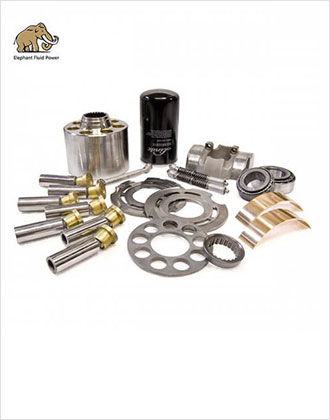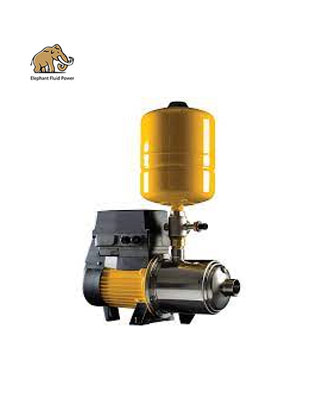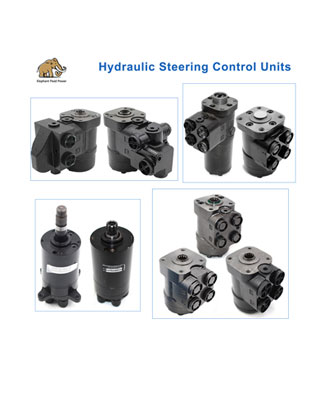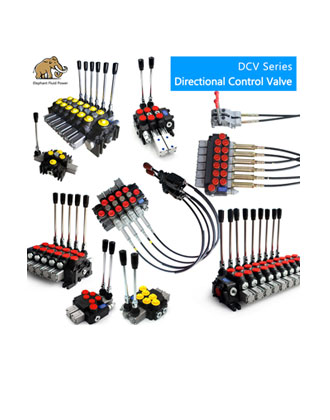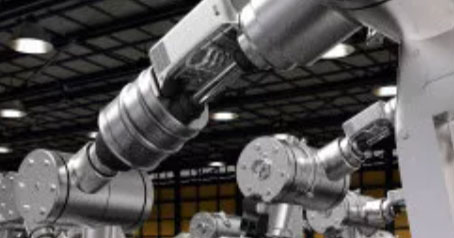Hydraulic directional valves play a pivotal role in controlling the flow of fluid within hydraulic systems. These valves are essential components in various industries, ranging from construction and agriculture to manufacturing and aerospace. In this blog, we will delve into the intricate process of hydraulic directional valve manufacture, highlighting its importance, components, and the steps involved in crafting these vital components.
The Significance of Hydraulic Directional Valve Manufacture
Hydraulic directional valves are responsible for regulating the flow of hydraulic fluid, enabling machinery and equipment to perform specific tasks efficiently. Whether it's controlling the movement of a construction vehicle's arm or ensuring precise motion in industrial machinery, these valves are integral to hydraulic systems. The manufacture of these valves is a complex process that requires attention to detail and precision engineering.
Components of Hydraulic Directional Valves
A hydraulic directional valve consists of several key components, each playing a critical role in its operation. The valve body serves as the main housing for all the internal components. It is typically made from high-quality materials such as cast iron or steel to ensure durability and resistance to pressure and fluid flow. The spool is the core component responsible for directing the flow of hydraulic fluid. It moves within the valve body to open or close specific pathways, allowing fluid to pass or be blocked. Actuators are used to control the movement of the spool. They can be solenoid-operated, hydraulic, or manual, depending on the application. Solenoid-operated actuators are common in modern hydraulic systems due to their quick response and precise control. Springs are used to provide the necessary force to return the spool to its default position when the actuator is not engaged. This ensures that the valve returns to its neutral state when no external force is applied. Hydraulic fluid enters and exits the valve through ports and passageways designed within the valve body. The configuration of these ports determines the flow paths that the valve can control.
The Manufacturing Process
The manufacture of hydraulic directional valves involves several intricate steps, each contributing to the final product's quality and functionality. The process begins with the design and engineering phase. Engineers create detailed plans, considering factors such as flow requirements, pressure ratings, and compatibility with different fluids. Computer-aided design (CAD) software is often used to create precise schematics. High-quality materials, such as alloy steels and cast iron, are selected for their durability and ability to withstand high pressures. The choice of material depends on the intended application and environmental conditions. The valve body and internal components are manufactured through machining processes like milling, turning, and drilling. These processes ensure precise dimensions and smooth surfaces, essential for proper valve functionality. Skilled technicians assemble the various components, including the spool, actuators, springs, and seals, within the valve body. Once assembled, each valve undergoes rigorous testing to ensure it operates as intended, with no leaks or malfunctions. Quality control checks are performed at various stages of manufacturing to identify and rectify any defects. This includes pressure testing, flow testing, and visual inspections.
The manufacture of hydraulic directional valves is a sophisticated process that demands engineering expertise, precision machining, and rigorous testing. These valves are indispensable in hydraulic systems across industries, enabling the controlled flow of fluids that power machinery and equipment. With their complex components and precise engineering, hydraulic directional valves continue to play a crucial role in modern technology and manufacturing processes.
 French
French
 Portuguese
Portuguese
 Russian
Russian
 German
German
 Spanish
Spanish
 Japanese
Japanese
 Korean
Korean
 Irish
Irish
 Greek
Greek
 Turkish
Turkish
 Italian
Italian
 Danish
Danish
 Romanian
Romanian
 Indonesian
Indonesian
 Czech
Czech
 Afrikaans
Afrikaans
 Swedish
Swedish
 Polish
Polish
 Basque
Basque
 Catalan
Catalan
 Esperanto
Esperanto
 Hindi
Hindi
 Lao
Lao
 Albanian
Albanian
 Amharic
Amharic
 Armenian
Armenian
 Azerbaijani
Azerbaijani
 Belarusian
Belarusian
 Bengali
Bengali
 Bosnian
Bosnian
 Bulgarian
Bulgarian
 Cebuano
Cebuano
 Chichewa
Chichewa
 Corsican
Corsican
 Croatian
Croatian
 Dutch
Dutch
 Estonian
Estonian
 Filipino
Filipino
 Finnish
Finnish
 Frisian
Frisian
 Galician
Galician
 Georgian
Georgian
 Gujarati
Gujarati
 Haitian
Haitian
 Hausa
Hausa
 Hawaiian
Hawaiian
 Hebrew
Hebrew
 Hmong
Hmong
 Hungarian
Hungarian
 Icelandic
Icelandic
 Igbo
Igbo
 Javanese
Javanese
 Kannada
Kannada
 Kazakh
Kazakh
 Khmer
Khmer
 Kurdish
Kurdish
 Kyrgyz
Kyrgyz
 Latin
Latin
 Latvian
Latvian
 Lithuanian
Lithuanian
 Luxembourg
Luxembourg
 Macedoniar
Macedoniar
 Malagasy
Malagasy
 Malay
Malay
 Malayalam
Malayalam
 Maltese
Maltese
 Maori
Maori
 Marathi
Marathi
 Mongolian
Mongolian
 Burmese
Burmese
 Nepali
Nepali
 Norwegian
Norwegian
 Pashto
Pashto
 Persian
Persian
 Punjabi
Punjabi
 Serbian
Serbian
 Sesotho
Sesotho
 Sinhala
Sinhala
 Slovak
Slovak
 Slovenian
Slovenian
 Somali
Somali
 Samoan
Samoan
 Scots Gaelic
Scots Gaelic
 Shona
Shona
 Sindhi
Sindhi
 Sundanese
Sundanese
 Swahili
Swahili
 Tajik
Tajik
 Tamil
Tamil
 Telugu
Telugu
 Thai
Thai
 Ukrainian
Ukrainian
 Urdu
Urdu
 Uzbek
Uzbek
 Vietnamese
Vietnamese
 Welsh
Welsh
 Xhosa
Xhosa
 Yiddish
Yiddish
 Yoruba
Yoruba
 Zulu
Zulu

